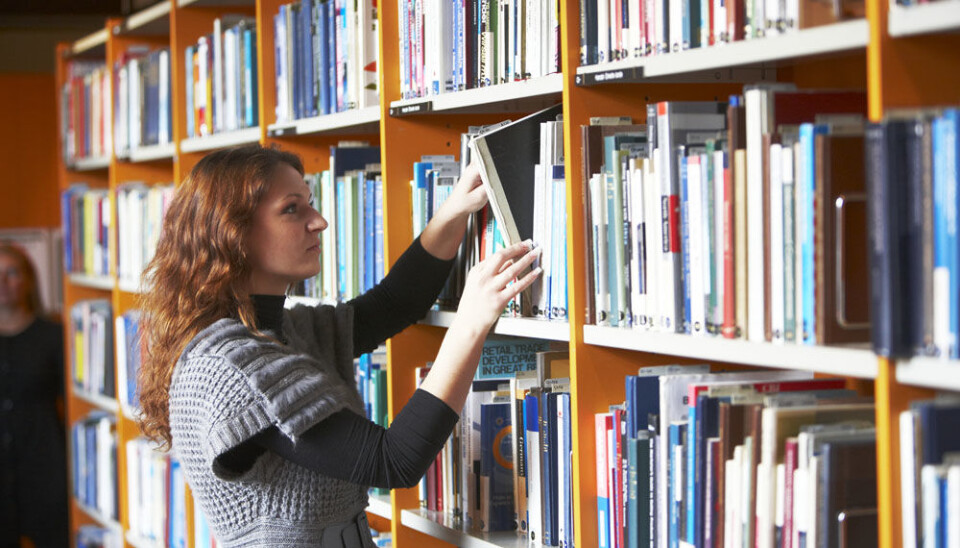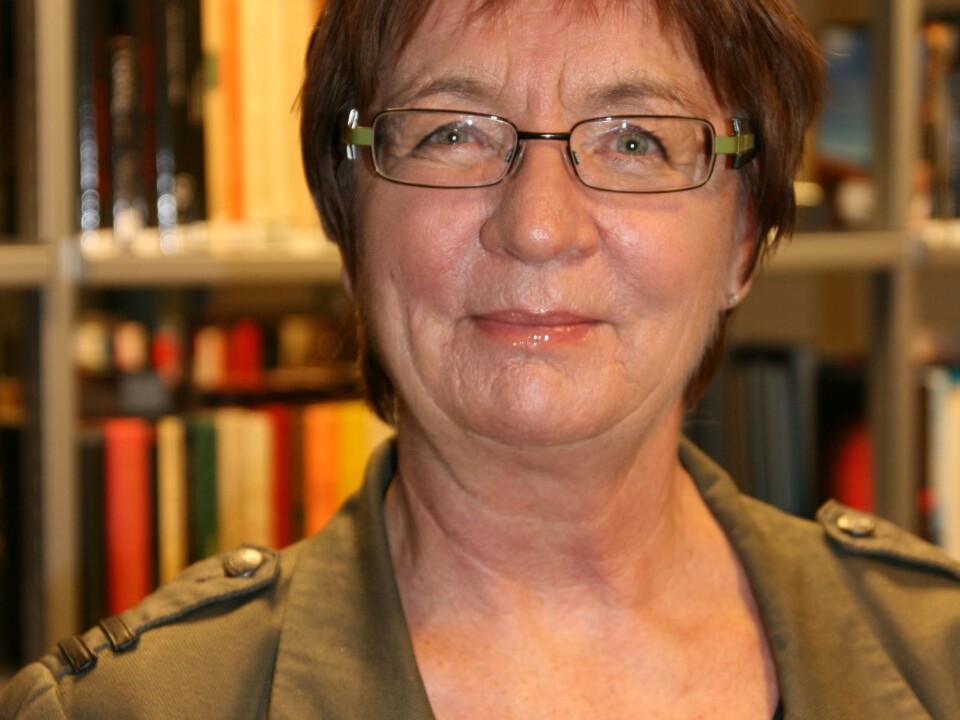This article was produced and financed by Oslo Metropolitan University

Public libraries promote inclusion
Loan statistics go down, but more people visit the libraries. In an increasingly multicultural society, libraries are more important than ever before.
Denne artikkelen er over ti år gammel og kan inneholde utdatert informasjon.
A woman in her thirties is sitting opposite a man in his fifties. Both of them are using the library's computers. The woman has recently made her debut as a fiction writer with one of the largest Norwegian publishing houses. The man has been unemployed for some time, and uses the library as a way of structuring his days.
Neither the woman's success nor the man's lack of success is apparent to others. To outsiders, both of them are simply library users.
At the library, users encounter things that are different and unfamiliar. It is also a place where one can hide one's marginalised position, according to a new study on public libraries.
"At the library, no-one is a doctor, a novelist, a patient, a client or unemployed. At the library, everyone is simply a library user," says Svanhild Aabø, Professor in Library and Information Science at Oslo and Akershus University College of Applied Science (HiOA).

Cheap, everywhere and available
"Libraries have become a diversified meeting place. Few other public arenas are so diverse in terms of visitors from the local community," says Aabø.
Together with other researchers at HiOA, Professor Aabø is studying the use and the users of public libraries. They want to find out what type of social institution the library actually is.
"People from all age groups visit libraries; people with high and low levels of education, high and low income groups and from different ethnic, social, cultural, religious and political backgrounds," says Aabø, who thinks that the opportunities which this diversity offers must be better exploited by the authorities in order to promote social inclusion.
"Libraries are cheap, they are found in all municipalities, and they are available to everyone," says Aabø.
Similar libraries, different people
Many have predicted in recent years that the days of the library were numbered, but despite the decline in loan statistics and the emergence of digital books, research shows that public libraries can still have an important role to play in modern society.
Aabø thinks that in a society as digitised and as complex as Norway, there is a need for meeting places that cross cultural, ethnic, generational and social boundaries.
"Libraries represent just such a meeting place," says Aabø. "People feel that the library belongs to them. Asylum-seekers also regard the library as somewhere where they have a right to be."
Aabø believes that the public libraries can identify people who are on the verge of becoming marginalised, and that libraries can contribute towards social inclusion.
The researchers observed and interviewed library users at three different public libraries in three districts of Oslo: one library on the more affluent side of the city, one downtown and one library in a district with a high a immigrant population density.
"What struck us was how similar these public libraries are, despite their different local environments," says Aabø.
Somewhere to go
Some library users just pop in to borrow a book and leave, while others go to sit there all day.
Although the average library visiting time is approximately 30 minutes, a high proportion of library users spend hours on their visits and use libraries as much as four to five days a week.
This is because libraries are no longer simply somewhere where you borrow books, music, films and other materials; they are also somewhere to go.
Although the loan statistics have taken a downward trend, library visit statistics have gone up. Studies show that the majority of users - 56 per cent - borrow nothing, but use the library in other ways instead.
Socio-economically profitable
According to Professor Aabø's research findings, there are large socio-economic differences between those who primarily borrow from libraries and those who simply use them.
The borrowing public consists of more women than men, has higher levels of education, and is represented by more people with ethnic Norwegian background.
Those who only visit the libraries constitute more men than women, have lower levels of education, and come from lower income groups and ethnic backgrounds other than Norwegian.
Professor Aabø emphasises that that fact that libraries are used by asylum-seekers and the unemployed is a good thing:
"It is positive that they can spend their days in such a meaningful place as a library, a place of knowledge and learning," she says. "Investing in libraries is socio-economically profitable."
----------------------------
Read this article in Norwegian at forskning.no






























